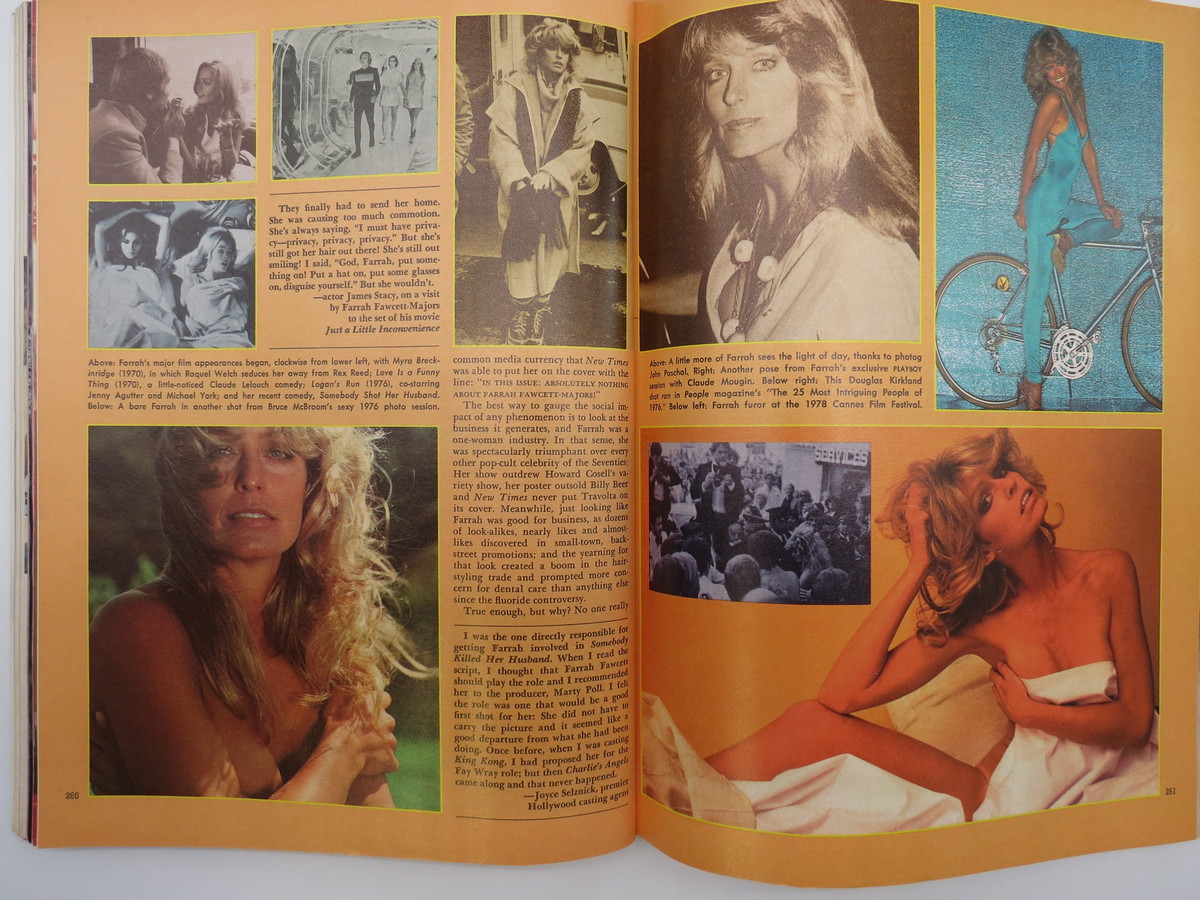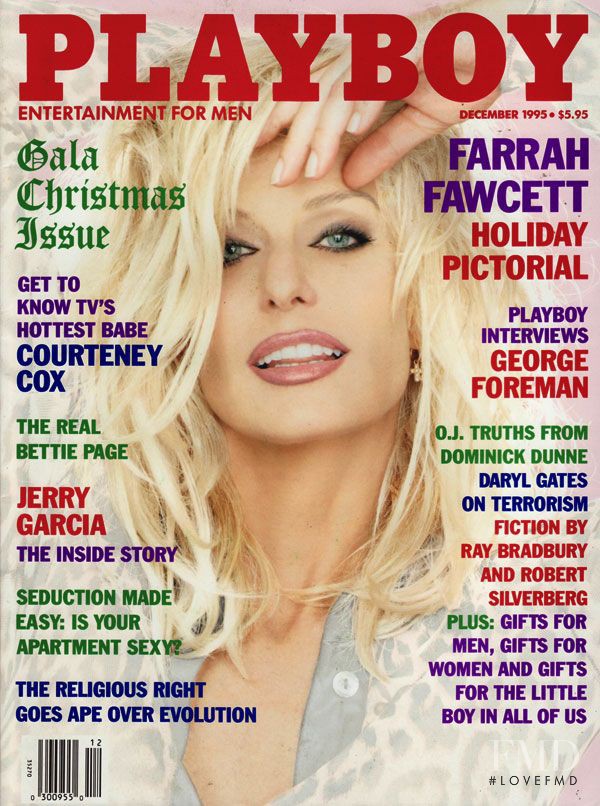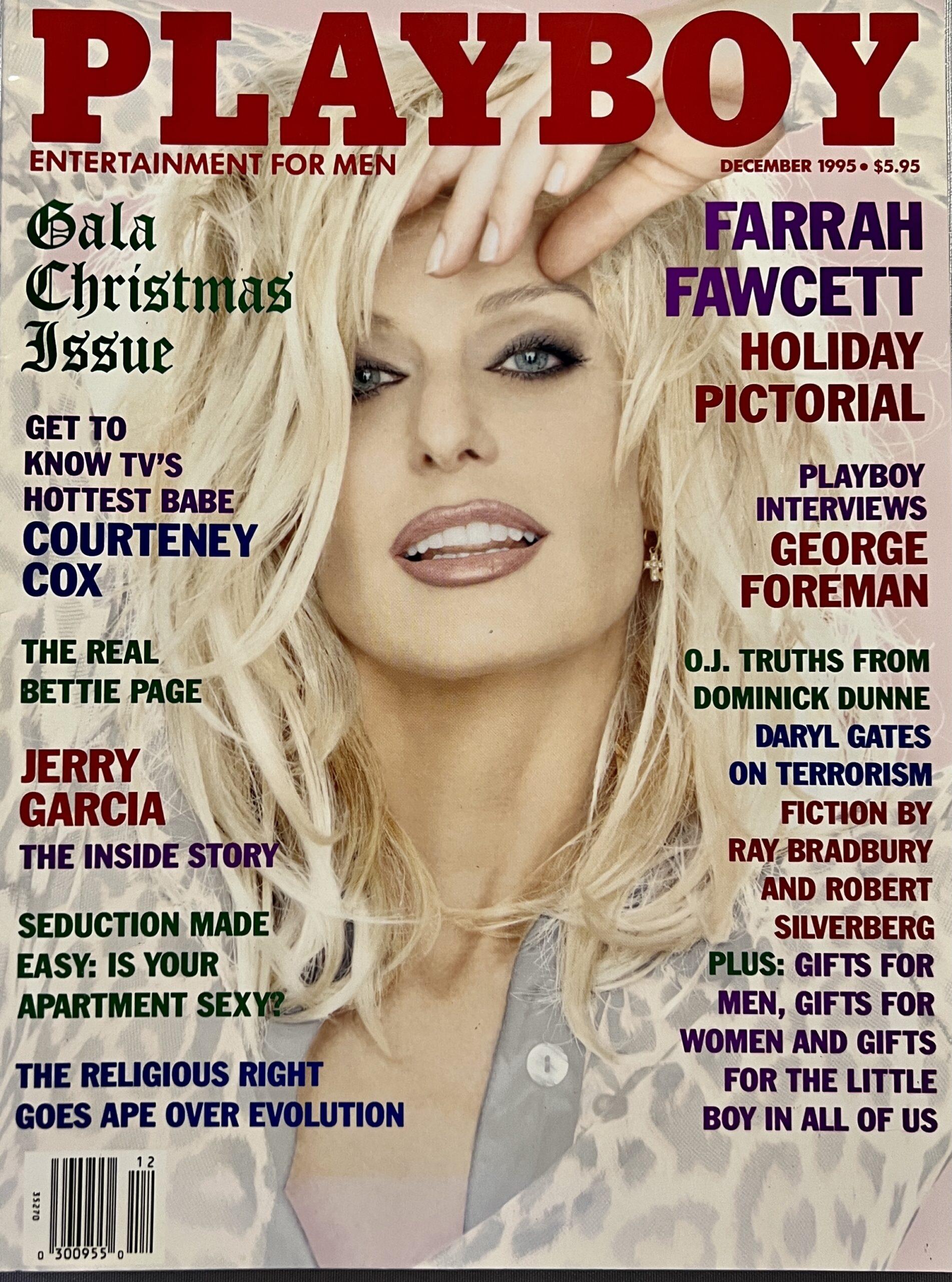Farrah Fawcett & Playboy: Shocking Revelations & Iconic Moments
Could the world's perception of beauty and fame truly be a gilded cage? Farrah Fawcett's journey, a captivating blend of iconic status and personal struggles, within the glossy confines of Playboy, offers a poignant lens through which to examine this very question.
The revelation, as highlighted in "Reinventing Farrah" by Robin Abcarian (June 6), that Fawcett encountered misogyny and chauvinism even within the supposed playground of Playboy, is a stark reminder that even the most glamorous figures are not immune to the darker currents of societal expectations. The paradox is particularly striking, considering the magazine's association with liberated sexuality and, at times, a veneer of progressive ideals.
Farrah Fawcett's relationship with Playboy magazine was multifaceted. While she graced the cover, most notably in December 1978, and again in December 1995, her participation was not without nuance. Her decision to largely resist taking her clothes off for magazines and movies throughout the '70s and '80s speaks volumes about her personal agency and a resistance to being solely defined by her physical appearance. This defiance, coupled with her undeniable beauty and charisma, fueled her star power, but it also set the stage for internal conflict as she navigated the demands of the industry.
Fawcett's allure was undeniable. Her iconic poster, featuring her in a one-piece swimsuit, became a cultural touchstone. Her cover appearances in Playboy, though celebrated, underscored the complex interplay between her image and her personal autonomy. The December 1995 issue, in particular, captured her at a later stage of her life, showcasing the ongoing evolution of her persona.
The story of Farrah Fawcett is a testament to the resilience of the human spirit, and the challenges of maintaining a public persona while striving for authenticity.
| Category | Details |
|---|---|
| Full Name | Farrah Leni Fawcett (born Ferrah Leni Fawcett) |
| Date of Birth | February 2, 1947 |
| Place of Birth | Corpus Christi, Texas, United States |
| Date of Death | June 25, 2009 |
| Known For | "Charlie's Angels", Iconic Poster, Playboy Cover, All of Me |
| Occupations | Actress, Model, Playboy Celebrity |
| Notable Works | "Charlie's Angels" (TV Series), Playboy Magazine Covers (December 1978, December 1995), "All of Me" (1997) |
| Relationships | Married to Lee Majors, later with Ryan O'Neal |
| Cancer Diagnosis | Diagnosed with cancer in 2006 |
| Legacy | Cultural Icon, Symbol of 1970s and 80s pop culture, enduring image of beauty and resilience. |
| Reference | IMDB |
The 1970s marked a turning point in the entertainment industry, and Fawcett was at the forefront. She embraced the era of emerging multimedia sex symbols, challenging the old ways and becoming a symbol of the changing times. She was part of the ABC television special 'Inside Television'
The cultural landscape of the time saw the rise of "dream girls" and the evolving definition of celebrity. Publications like Playboy played a role in this evolution, often blurring the lines between art, commerce, and personal expression. Fawcett, with her distinctive style and poise, embodied the spirit of this transition.
Fawcett's appearances in Playboy magazine, particularly the December 1978 cover, were significant. She wasn't just a pretty face; she was a cultural icon, and her presence on the cover was a statement of her fame and desirability. These covers became collector's items, further solidifying her iconic status.
The "All of Me" special, released on June 11th, 1997, offered a different perspective on Fawcett's persona. This project, directed by Davis Factor and Mark Manos, featured Fawcett revealing her body on camera at fifty years of age. It represents her willingness to explore her image and redefine the boundaries of beauty and self-expression, especially in the context of aging within the spotlight.
The benefit event at the Playboy Mansion in Holmby Hills, California, on May 17, 1976, further emphasized her connection with the magazine's cultural milieu. The event, where she participated in celebrity tennis, positioned her within a social network that highlighted celebrity, beauty, and high society.
The 1976 poster of Fawcett in a bathing suit, a visual masterpiece, became an enduring symbol of the era. It cemented her status as a global icon. This single image captured the imagination of the public and launched her into superstardom. It was a representation of her image that would follow her for life.
The juxtaposition of her roles in both "Charlie's Angels" and Playboy magazine underscored the dual nature of her career. While "Charlie's Angels" brought her mainstream fame, her involvement with Playboy provided a platform for exploring her image on her terms. This dual aspect reflects the complexities and contradictions of fame, particularly for women in the entertainment industry.
The story of Farrah Fawcett is a study in how beauty and fame intersect, and how those who embody it navigate the pressures and pitfalls of the public eye. Her choices, her triumphs, and her struggles offer a compelling insight into the human experience.


